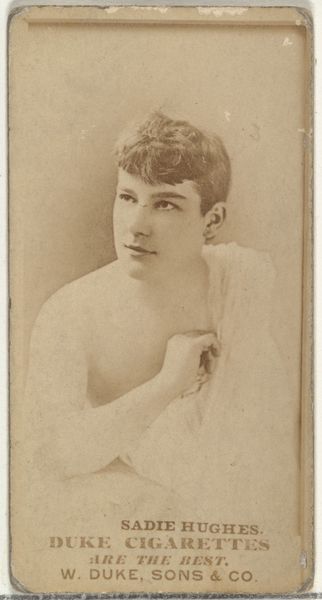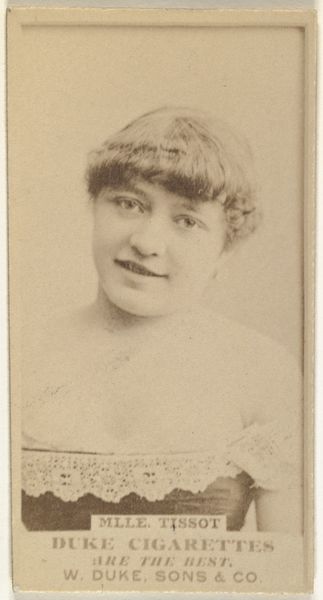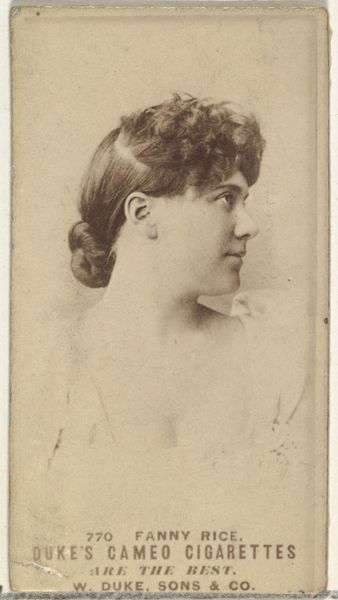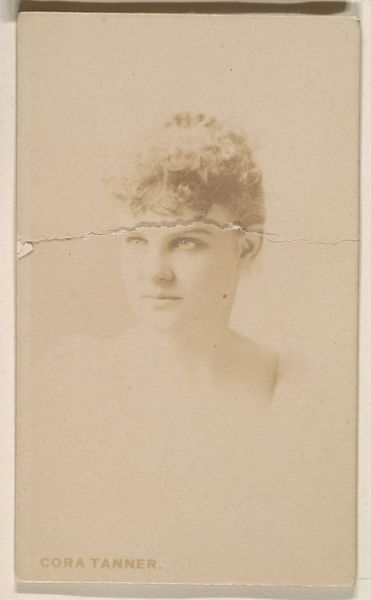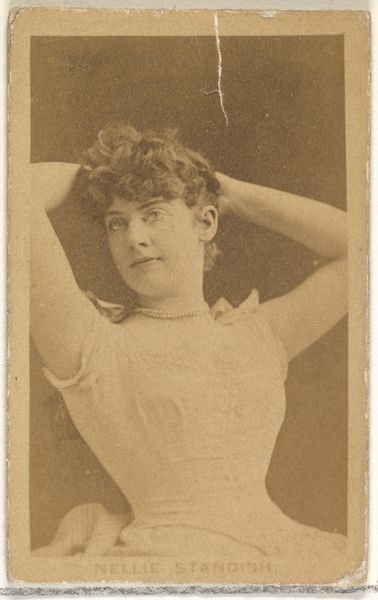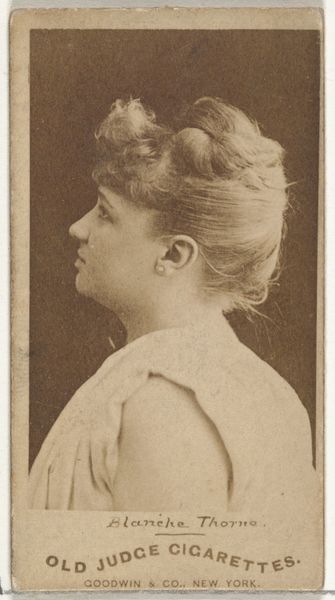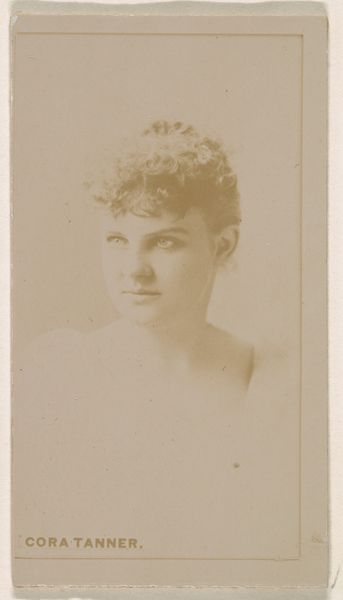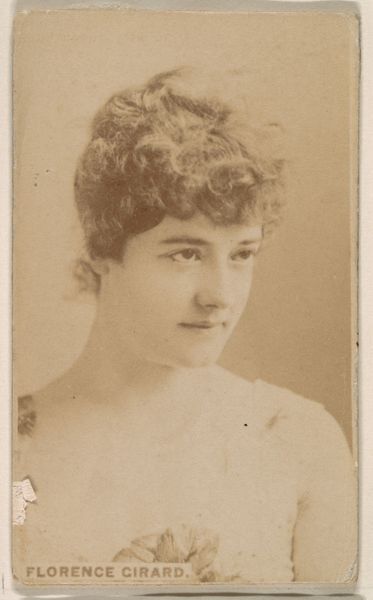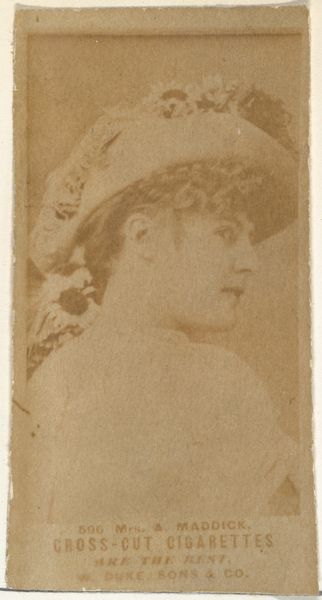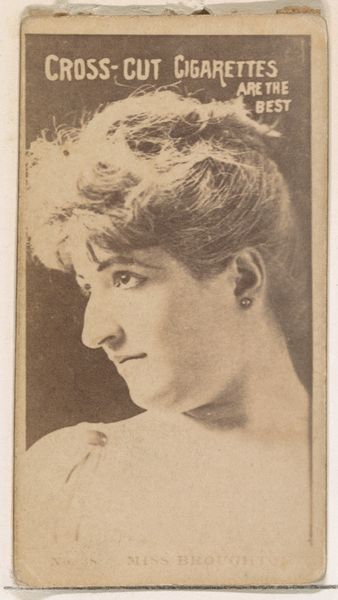
Card Number 542, Mrs. James Brown Potter, from the Actors and Actresses series (N145-7) issued by Duke Sons & Co. to promote Duke Cigarettes 1880s
0:00
0:00
drawing, print, photography
#
portrait
#
drawing
# print
#
photography
Dimensions: Sheet: 2 11/16 × 1 3/8 in. (6.8 × 3.5 cm)
Copyright: Public Domain
Curator: I find the subtle tonal range fascinating—such fine gradations in this sepia portrait. Editor: And what portrait is that exactly? Curator: We are looking at "Card Number 542, Mrs. James Brown Potter," part of the "Actors and Actresses" series issued by W. Duke, Sons & Co. in the 1880s, right when cigarette cards were exploding in popularity. It's currently housed at the Metropolitan Museum of Art. Editor: The subject almost seems caught in a moment of wistful reflection. The print quality, though aged, has a certain allure, doesn't it? It also clearly indicates how such images participated in popularizing celebrities of the age. Curator: Exactly. It's not just a portrait; it’s industrial production meeting the glamour of the stage. These cards were meant to stiffen cigarette packs, yes, but they also acted as miniature publicity vehicles and played a vital role in creating celebrity culture, reaching a broad audience beyond traditional theater-goers. Editor: I'm intrigued by the material conditions: cheap cardstock, mass printing. We're seeing a transformation of image distribution thanks to these mass produced cigarette cards. Who was Mrs. James Brown Potter anyway? Curator: She was a famous American actress. By placing her image on a widely circulated commercial product, Duke Cigarettes not only promoted their brand but also connected it with ideals of beauty, talent, and success, subtly equating their product with those attributes. It’s a shrewd form of advertising. Editor: Certainly a smart and calculated form of consumer engagement. Seeing this image made through a reproductive technology from this period alongside marketing claims is also helpful for better understanding social histories and how social values become attached to goods, figures, or practices. Curator: Precisely, these small cards were incredibly effective at weaving desires into the everyday habits of the populace. It's not just art; it's material culture shaping and reflecting societal values. Editor: Yes, indeed. I see so much to unpack here in this small print that reflects broader social practices and relations.
Comments
No comments
Be the first to comment and join the conversation on the ultimate creative platform.
